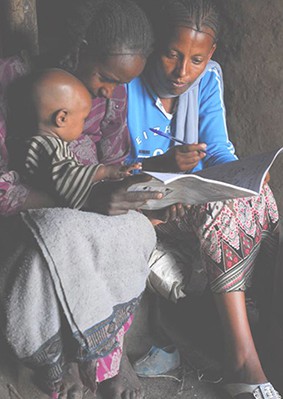There is no one-size-fits-all monitoring tool. We will focus on two of the most common tools used for systematic monitoring, data gathering and reporting applicable at woreda level. These are annual work plans and field visits.
Annual work plans (AWPs) detail the activities to be carried out by the woreda in the year ahead. The plans are specific to a project and are based on its intended outputs in relation to each intended outcome. AWPs include details of who is responsible for what, time frames and budget. They also serve as useful references for monitoring progress later in the year. A sample annual plan is given in Table 15.2. It provides a template that may be adapted for practical use, as appropriate.
| Outcome: | |||||||||
| Expected outputs | Planned activities | Time frame | Person responsible | Budget | Monitoring framework | ||||
| Q1 | Q2 | Q3 | Q4 | Expenditures | Progress towards outputs | ||||
| Output 1 targets: |
|
|
|
|
|
|
|
||
|
|
|||||||||
|
|
|||||||||
|
|
|||||||||
| Output 2 targets: |
|
||||||||
|
|
|||||||||
|
|
|||||||||
|
|
|||||||||
| Output 3 targets: |
|
||||||||
|
|
|||||||||
|
|
|||||||||
|
|
|||||||||
Field visits are essential for any community-based interventions (Figure 15.6). Field visits should be planned thoroughly in order to be of maximum use. As summarised by UNDP (2009), the following considerations may help in planning an effective field visit.

Figure 15.6 A practitioner undertaking a field visit to interview mothers to monitor performance of a WASH initiative.
The content of a field visit report varies depending on the purpose of the visit. At a minimum, it should contain an analysis of the progress towards results, the identification of outputs, partnerships, key challenges and proposed actions. A form illustrating the type of information that could be gathered during a field visit is given in Table 15.3. This form may be changed to suit your particular needs.
| Date of visit: |
| Subject and place of visit: |
| Purpose of the field visit: |
| Main challenges in implementation: |
| Progress towards results: |
| Prepared by: |